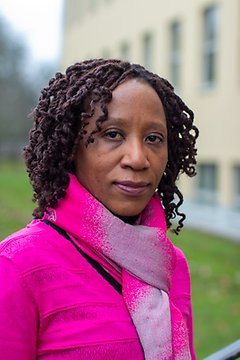Agriculture development projects weak on women's empowerment

Bridget Bwalya Umar and her research colleagues on fieldwork in Mambwe district, Eastern Zambia.
Two development interventions in rural Zambia have shown limited results on women’s empowerment. Special attention to gender equality will not succeed unless projects are economically profitable for farmers, argues NAI researcher Bridget Bwalya Umar.
Bwalya Umar and three colleagues have conducted a survey and interviews with farmers in eastern Zambia who are participating in three development projects — two Norwegian-funded projects in conservation agriculture and one Chinese-funded cotton production project.
About the research
A household survey was conducted with 235 randomly selected households. Of these households, 159 and 76 were participating in Norwegian- and Chinese-funded intervention projects, respectively. The survey was later complemented by six focus group discussions and 12 key informant interviews.
Read the article 'Women’s empowerment, land and donor-driven agricultural interventions in Eastern Zambi External link, opens in new window.a'
External link, opens in new window.a'
The Chinese cotton company provides the necessary inputs to anyone who wants to grow cotton. It also offers training in cotton farming, since it is in the company’s interest that yields are high, but does not otherwise tell anyone how to cultivate their crop.
The Norwegian aid projects have more requirements over how production should be carried out. The projects do not allow chemical inputs, which means farmers without livestock and limited access to manure find it hard to fertilise their crops. Furthermore, if laws are broken – for example, by poaching or setting bush fires – project managers reduce prices for crops.
“Then, everyone in a community gets punished for the deeds of a few people. Particularly for women farmers, this is unfair treatment, as they are seldom the culprits”, Bwalya Umar remarks.
Other requirements of the projects actually put a greater work burden on women. Bwalya Umar points out that instead of trying to overcome the cultural norm that women should not plough with oxen, the projects insist that women use hoes. This means it takes women more time to cultivate less land and other duties suffer.
“In addition, only one member of each household receives farming inputs. This normally means it goes to the men. The Chinese don’t care who or how many people grow cotton. They only want a good harvest, which they encourage by giving rewards to the best producers”.

Bridget Bwalya Umar.
Because of other household duties, it is difficult for women to go to markets to sell their produce. The cotton company has resolved this by offering payment on the doorstep. They go to farmers’ homes, weigh the cotton and pay in cash immediately.
“Cotton company officials said they don’t care if it is men or women that grow and sell cotton to them. However, perhaps they prefer women farmers because they also said that women are less inclined to side-sell cotton to other buyers. After all, the company gives inputs with the condition to be the sole buyer”, Bwalya Umar explains.
Rural development interventions should, first and foremost, be economically viable and able to stand on their own, she points out. Second, projects should aim for long-term development goals. During her research, Bwalya Umar found that the Norwegian-funded projects did not allow farmers to start processing their produce and sell directly to supermarkets themselves. The NGO wants to keep its role as intermediary.
“When I asked, they said farmers do not have the capacity for processing”. But that only means milling and packaging, Bwalya Umar says. “If the project is about empowering the community, then it should be giving farmers skills to move to the next level in the value chain. Key in all development projects is empowering people without creating dependency”, she continues.
Bwalya Umar has also looked at who gets promoted to field officer roles in the projects. The Chinese cotton company only asks that its field officers have farming capabilities. NGOs, however, prefer someone with an education, who can use a smartphone, is well-known in the area and does not mind speaking in public.
“Then, normally, a man is picked. If they really wanted to empower women, as they say, it would not be that difficult to teach someone to use a phone or let them talk in the local language in meetings. Those are just excuses”, she concludes.
TEXT: Johan Sävström
